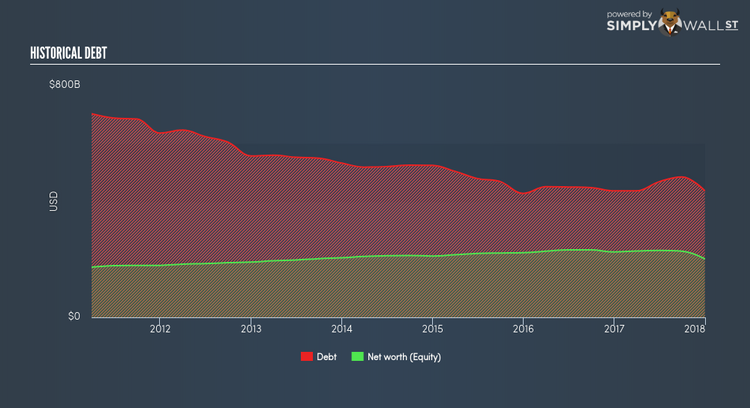Have You Considered These Important Risk Metrics For Citigroup Inc (NYSE:C.PRJ)?

As a US$198.08B market capitalisation company operating in the financial services sector, Citigroup Inc (NYSE:C.PRJ) has benefited from strong economic growth and improved credit quality as a result of post-GFC recovery. Growth stimulates demand for loans and impacts a borrower’s ability to repay which directly affects the level of risk Citigroup takes on. With stricter regulations as a consequence of the recession, banks are more conservative in their lending practices, leading to more prudent levels of risky assets on the balance sheet. Since the level of risky assets held by a bank impacts its cash flow and therefore the attractiveness of its stock as an investment, I will take you through three metrics that are insightful proxies for risk. View our latest analysis for Citigroup
What Is An Appropriate Level Of Risk?
If Citigroup does not engage in overly risky lending practices, it is considered to be in good financial shape. Loans that cannot be recovered by the bank are known as bad loans and typically should make up less than 3% of its total loans. Loans are written off as expenses when they are not repaid, which comes directly out of Citigroup’s profit. Since bad loans make up a relatively small 0.69% of total assets, the bank exhibits strict bad debt management and faces low risk of default.
How Good Is Citigroup At Forecasting Its Risks?
The ability for Citigroup to accurately forecast and provision for its bad loans shows it has a strong understanding of the level of risk it is taking on. If the level of provisioning covers 100% or more of the actual bad debt expense the bank writes off, then it is relatively accurate and prudent in its bad debt provisioning. Given its large bad loan to bad debt ratio of 266.73%, Citigroup excessively over-provisioned by 166.73% above the appropriate minimum, indicating the bank may perhaps be too cautious with their expectation of bad debt.
How Big Is Citigroup’s Safety Net?

Citigroup makes money by lending out its various forms of borrowings. Deposits from customers tend to bear the lowest risk given the relatively stable amount available and interest rate. The general rule is the higher level of deposits a bank holds, the less risky it is considered to be. Citigroup’s total deposit level of 58.50% of its total liabilities is within the sensible margin for for financial institutions which generally has a ratio of 50%. This indicates a prudent level of the bank’s safer form of borrowing and a prudent level of risk.
Next Steps:
With positive measures for all three ratios, Citigroup shows a prudent level of managing its risky assets. It has maintained a sufficient level of deposits against liabilities and reasonably provisioned for the level of bad debt. The company’s judicious lending strategy gives us higher conviction in its ability to manage its operational risks which makes Citigroup a less risky investment. We’ve only touched on operational risks for C.PRJ in this article. But as a stock investment, there are other fundamentals you need to understand. Below, I’ve compiled three relevant factors you should look at:
1. Future Outlook: What are well-informed industry analysts predicting for C.PRJ’s future growth? Take a look at our free research report of analyst consensus for C.PRJ’s outlook.
2. Valuation: What is C.PRJ worth today? Has the future growth potential already been factored into the price? The intrinsic value infographic in our free research report helps visualize whether C.PRJ is currently mispriced by the market.
3. Other High-Performing Stocks: Are there other stocks that provide better prospects with proven track records? Explore our free list of these great stocks here.
To help readers see pass the short term volatility of the financial market, we aim to bring you a long-term focused research analysis purely driven by fundamental data. Note that our analysis does not factor in the latest price sensitive company announcements.
The author is an independent contributor and at the time of publication had no position in the stocks mentioned.

